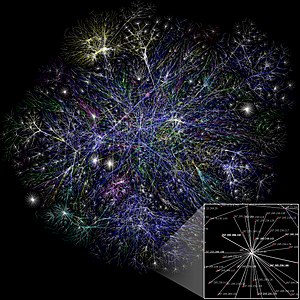
- Image via Wikipedia
Highly sophisticated video-content analysis now makes possible fast and reliable diagnosis of pulmonary embolisms, automatically detects threatening situations in surveillance scenarios and can provide more enjoyable and customised home entertainment. The systems achieve this by reacting not only to the contents of the data but also to the context. Commercial applications are already developing across Europe.
The EUREKA ITEA 2 software Cluster CANTATA project has made possible advanced and automatic analysis of digital video content to improve surveillance, speed medical diagnosis in life-threatening situations and provide consumers with fast access to preferred home entertainment material. Advanced digital technologies and the availability of greater systems power have enabled the development of robust analytical algorithms for content interpretation, a scalable platform facilitating analysis across a wide range of applications, content presentation that adapts to the device, user and content, and a common understanding of quality levels in content analysis. Demonstrations of surveillance, medical and multimedia applications developed for the project are already leading to commercial products.
The amount of digital video content now available makes automated interpretation essential to ensure optimal use of data in the shortest possible time. Massive expansion of video applications over the Internet and corporate networks is becoming a reality and additional content-analysis-based applications are about to follow.
Such applications involve transferring and interpreting huge amounts of data — from multi-camera security installations functioning 24 hours a day, 7 days a week, through the increasing amount of graphical information in medical diagnosis from for example high resolution 3D scanners that put a high stress on the medical experts involved, to the homeconsumer who has access to virtually unlimited multimedia content, increasingly over the Internet.
Making the system aware
Current video systems are limited as human interpretation is required to discriminate. The ITEA CANTATA project saw a need to make the system itself aware of both the contents and its context, and to use this knowledge to establish an action or control the environment autonomously. As a result, the quality and reliability of automatic content analysis will become an important discriminating factor in market choice.
“Even intelligent state-of-the-art systems currently fail compared with human intelligence as the context of information on which the adaptive behaviour is based is completely ignored,” explains Dr. Egbert Jaspers from Philips Research. “Realistic context models are needed to improve the decision making of complex vision systems and to produce faithful and meaningful behaviour.”










